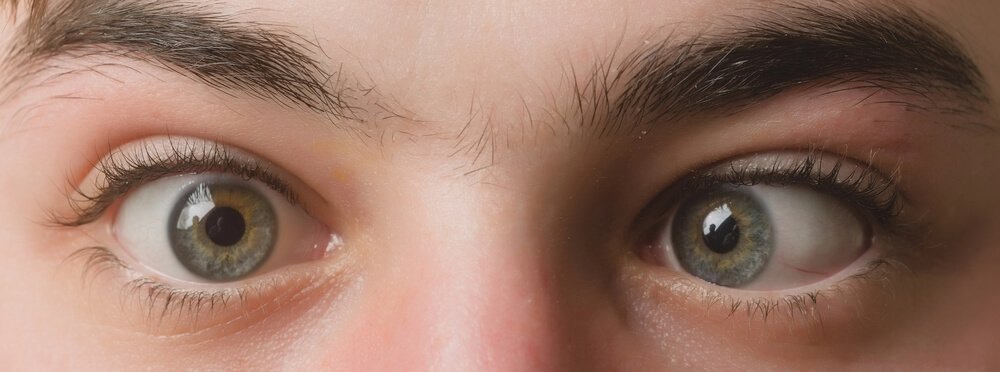
Lazy eye, also known as amblyopia, is a condition that affects how your brain processes vision from one of your eyes. It usually begins in childhood and, if left untreated early, may carry into adulthood. If you’re an adult wondering whether LASIK can help with this condition, there are a few key things to understand about how the procedure works and what it can and cannot do.
Understanding Lazy Eye
Lazy eye is not caused by an issue with the eye’s structure itself. Instead, it happens when the brain doesn’t fully recognize the visual input from one eye. Over time, that eye becomes weaker because the brain starts to rely more heavily on the stronger one.
In most cases, this starts early in life. The most common reasons include misalignment of the eyes or a significant vision difference between the two. Because the problem is based on how the brain interprets signals, improving vision in the weaker eye isn’t always as simple as correcting the visual clarity.
What LASIK Does
LASIK is a laser-based procedure designed to reshape the surface of your eye to improve how well it focuses light. It’s often recommended for people who wear glasses or contact lenses and are seeking greater visual freedom. The main goal of LASIK is to improve the clarity of sight in each eye individually.
This makes LASIK a good option if someone with a lazy eye also has blurry or poor vision that hasn’t been corrected. However, the key factor here is whether or not the lazy eye has the potential to send strong enough signals to the brain even after the image is made clearer.
When LASIK May Help
If the lazy eye still has some functional connection to the brain, and the main limitation is simply poor focus, then LASIK might provide improvement. This is usually the case in adults who were never diagnosed or treated early, but still have some usable vision in the weaker eye.
LASIK could potentially make that weaker eye see more clearly, and in some cases, this may lead to better coordination between the eyes. But it’s not a guaranteed fix. The procedure cannot retrain the brain to recognize the lazy eye’s input on its own.
That said, improved clarity in both eyes may help you feel more balanced overall. If the stronger eye becomes less dependent on correction, it might make daily tasks easier. Some people also report improved comfort, less eye strain, and better depth perception after LASIK-even if the brain’s reliance on the stronger eye remains.
When LASIK Won’t Help
If the lazy eye is completely suppressed by the meaning, it has minimal input and little recognition-then LASIK may not bring noticeable change to how that eye functions. The procedure won’t repair the communication gap between the brain and the eye. In cases like these, LASIK may still be performed for the stronger eye if it has poor vision, but it won’t change how the brain processes sight between the two.
It’s also worth noting that LASIK does not replace treatment methods like vision therapy, which are often used in younger patients to train the eyes to work together.
What About Children and Teens?
LASIK is not usually recommended for children. Their eyes are still developing, and treatment for the lazy eye at that stage tends to focus on strengthening the connection between both eyes and the brain. This can include patching the stronger eye, using corrective lenses, or guided vision exercises.
By adulthood, that treatment window has often passed. Still, LASIK might serve as a supportive step, especially for those who never had intervention earlier in life but want to improve their overall quality of vision.
Is LASIK Safe for Lazy Eye?
Yes, LASIK is considered safe for individuals with a lazy eye, provided that your eye health qualifies you as a candidate. Before moving forward, your doctor will conduct a full examination to determine whether the weaker eye has correctable vision and whether both eyes are otherwise healthy.
You’ll likely go through several vision tests during your consultation. This helps your doctor decide how much benefit you may see after the procedure and whether it makes sense for your case.
What to Expect From Results
It’s helpful to go in with the right expectations. LASIK can improve sharpness in the weaker eye if it still has visual potential, but it won’t change how your brain uses input from that eye. Your doctor may also recommend combining LASIK with follow-up vision therapy if they believe it could strengthen the eye-brain relationship post-surgery.
Some patients experience improved comfort, reduced dependence on glasses, and more balance in visual perception-especially when LASIK is performed on both eyes. But again, results vary based on the condition and how your brain responds.
If you’ve been living with a lazy eye and are curious about your options, a professional evaluation is the best place to start. Your doctor will discuss whether the eye still has treatable vision and whether LASIK would benefit your overall sight.
They’ll also check the health of both eyes and review any underlying conditions that might affect your results. If LASIK is not the best route, they can walk you through alternative solutions that may help you reach your vision goals.
Ready to take the next step toward a clearer vision? Schedule a consultation with SuraVision today to discuss your options and learn more about LASIK Surgery. Call us at 713-730-2020 or book your appointment online!

